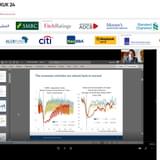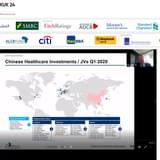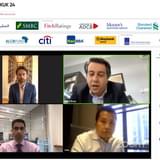Earlier this week, the Reserve Bank of India cut interest rates by 25bp from 6.50% to 6.25% following its latest policy meeting. The meeting was the first for the new governor Urjit Patel.
The RBI’s latest interest rate cut did not come wholly unexpected, and was priced into the markets, which are also forecasting further cuts according to a senior analyst speaking to Bonds & Loans.
Patel appears to have substantial expectations to live up to after his predecessor, Raghuram Rajan, who was able to stabilise the currency following a record low against the dollar in 2013 of 65.7050 according to Bloomberg. The rupee has subsequently appreciated further to 66.5075 against the dollar.
“Patel has responded within the level of expectations people had of him, it is still early days for him,” said Greg Saichin, CIO of EM fixed income at Allianz Global Investors.
Patel also appears to have eased his position on inflation. According to Bloomberg, when deputy governor, Patel had planned to keep inflation at 4% by March 2018 – but by not reiterating this at Tuesday’s policy meeting, economists are now predicting that inflation could be allowed to rise by up to 6% - or the upper limit of the RBI’s target.
Saichin noted that it is important that Patel does not stray from the position of having a fairly balanced level of inflation. Consumer prices rose 5.05% year-on-year in August, figures from Trading Economics show, and inflation has averaged 7.59% over the last 4 years.
Despite an upwards revision of inflation figures, from an investor perspective, any problem is more of a domestic duration issue that would be most relevant to investors operating in the domestic rupee curve, Saichin noted.
“The most important thing in India at present is the scale and pace of reforms – which are much more significant from an investor perspective,” he added.
The analyst noted that fixed income investments have been poor recently when considering the investment pattern in India.
“Portfolio investments have not been particularly strong this year. Foreign investors have been shifting funds from the corporate bond space into the government bond space and investments into the former remain small.”
Although there are restrictions on foreign investment in rupee products – outside of masala bonds which are becoming more popular, with HDFC and Indiabulls Housing Finance both issuing such products – opportunities will start to appear in the dollar-denominated market in India.
The pace of reform has been slow at developing the bond markets, particularly on the corporate side according to Saichin, but, “change will happen and liquidity will increase in such private entities,” although he added that this will likely be a 2 year process.
The analyst agreed. “Many entities are likely simply redeeming their corporate bonds and there will not often be new opportunities unless there is a strong corporate bond market in the local space.”









